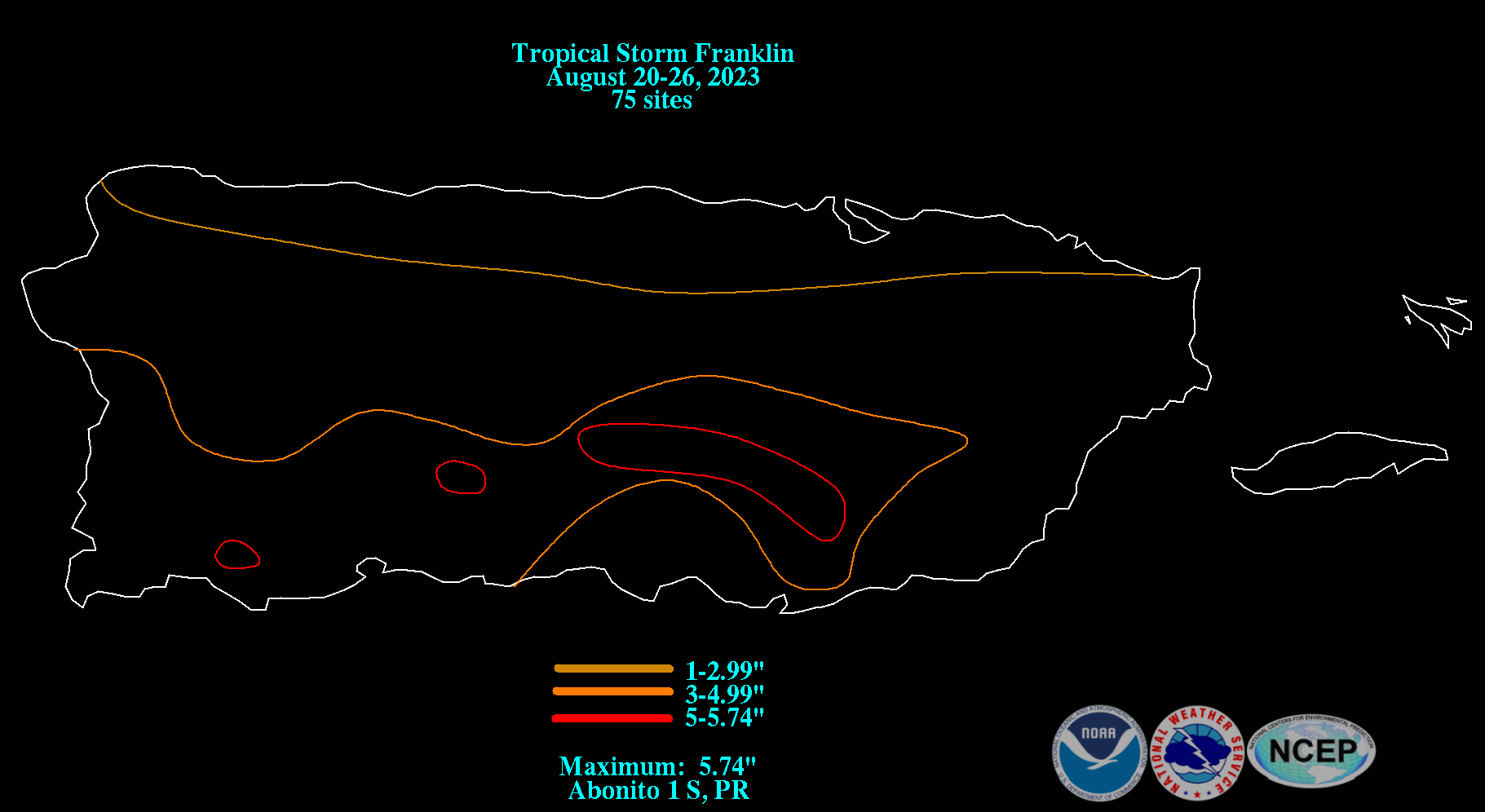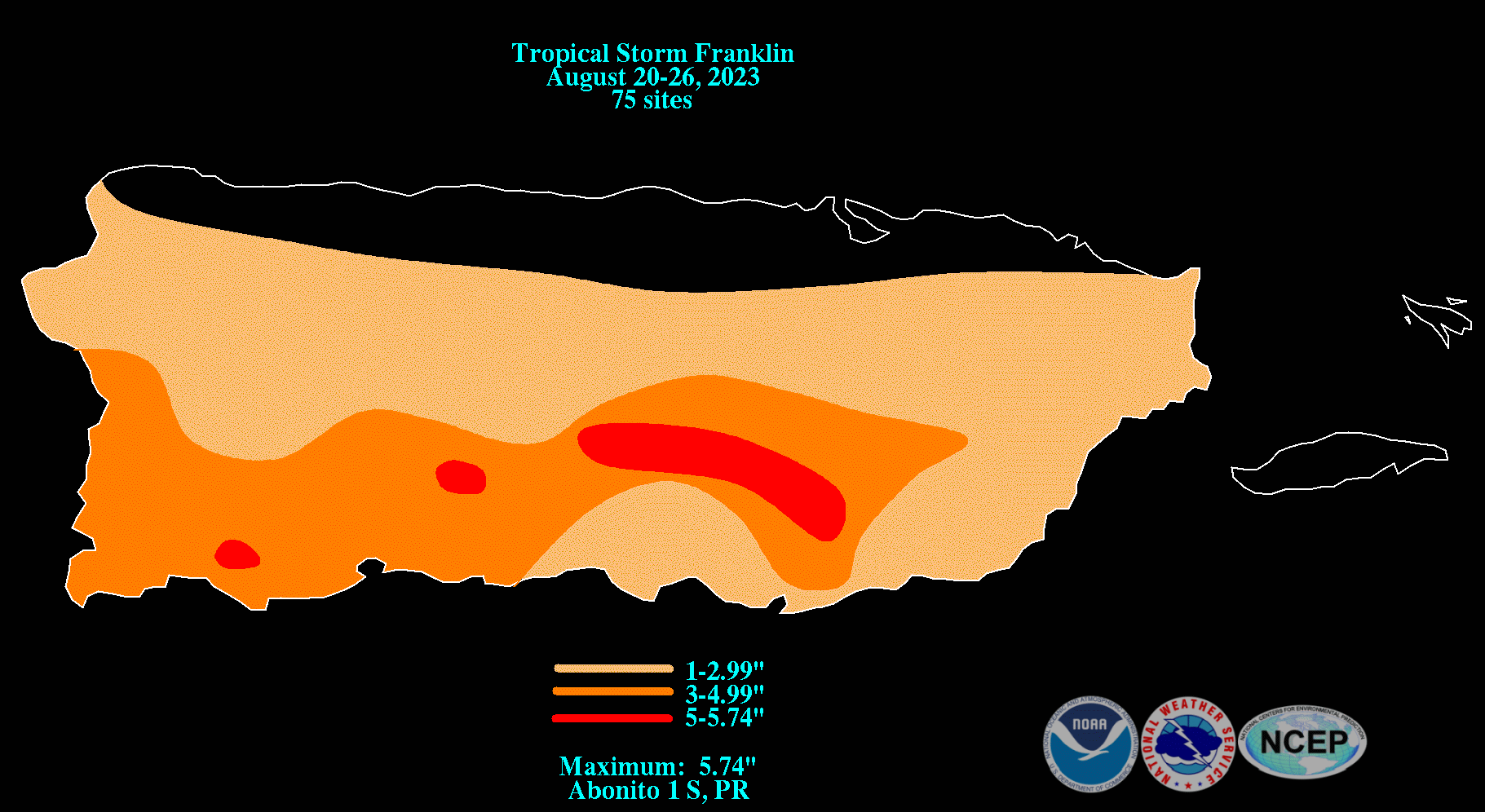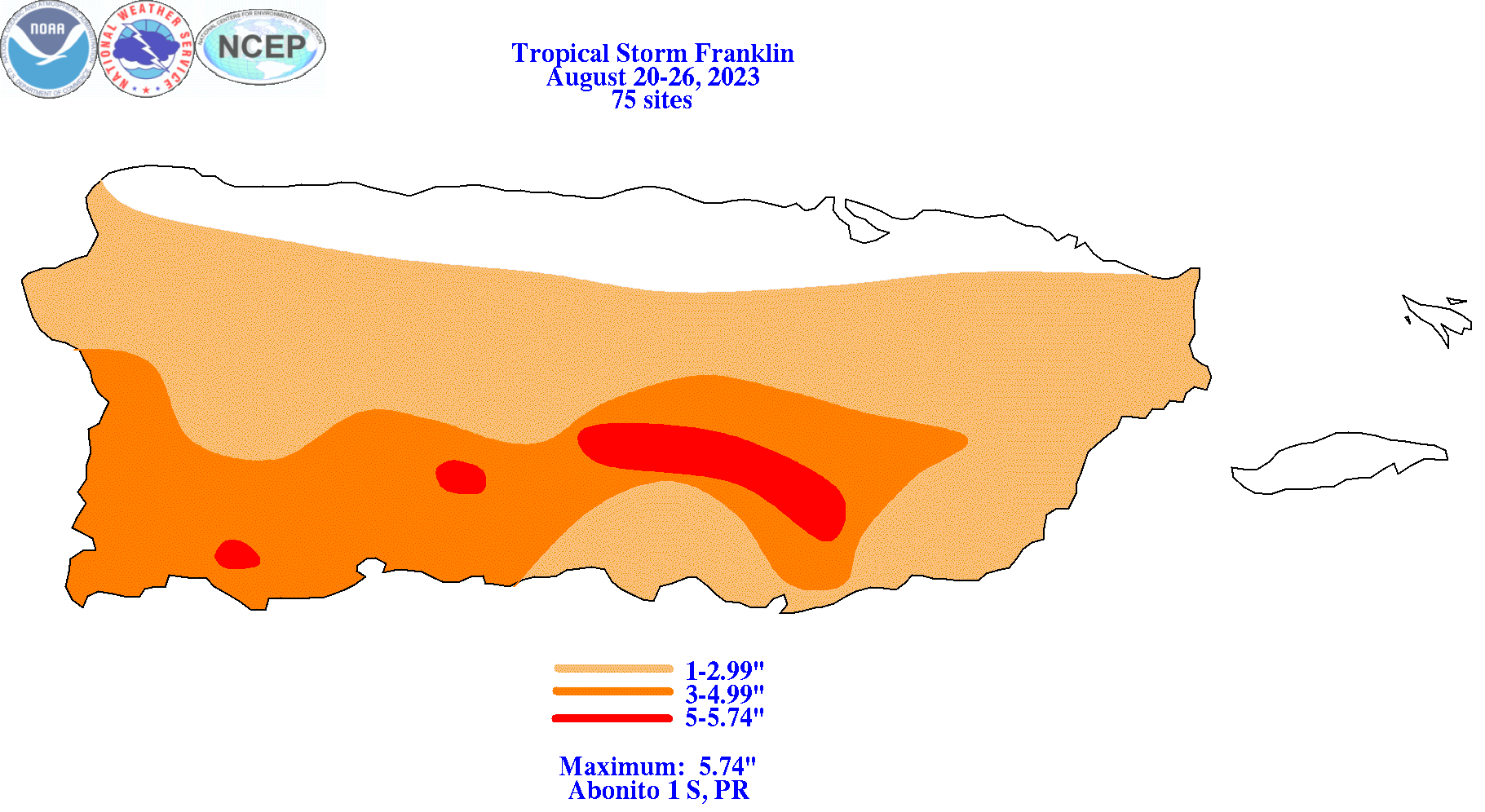On August 17th, an elongated area of low pressure was moving westward well to the east-southeast of the Lesser Antilles. The low consolidated
on the 19th closer to the Leeward Islands, and by the 20th had organized into a tropical storm while moving across the eastern Caribbean Sea.
Moderate vertical wind shear halted further development as Franklin slowed across the central Caribbean Sea. It would turn northwest and north
on the 22nd and 23rd, moving across the Dominican Republic on the 23rd. Soon after emerging into the western subtropical North Atlantic, Franklin
turned east on the 24th. On the 25th, Franklin turned west-northwest and intensified, becoming a hurricane which then recurved along a parabolic path,
becoming a major hurricane on the 28th, and peaking into strength as it turned north. Weakening as it turned northeast due to eyewall replacement cycles
and increasing vertical wind shear. Franklin became a hurricane-force extratropical cyclone on September 1st. After absorbing Jose, Franklin resumed
its northeast motion, moving north of the Azores on the 4th and then turning to the southeast towards the northwest coast of Spain on the 7th, briefly
redeveloping some central convection. It then turned north, and was absorbed on the 9th after turning back to the south around a new area of low
pressure.
The graphics below show the storm total rainfall for Franklin, which used rain gage information from National Weather Service River Forecast
Centers, xMACIS2, National Weather Service Forecast Offices, and CoCoRAHS.
 |
 |
 |